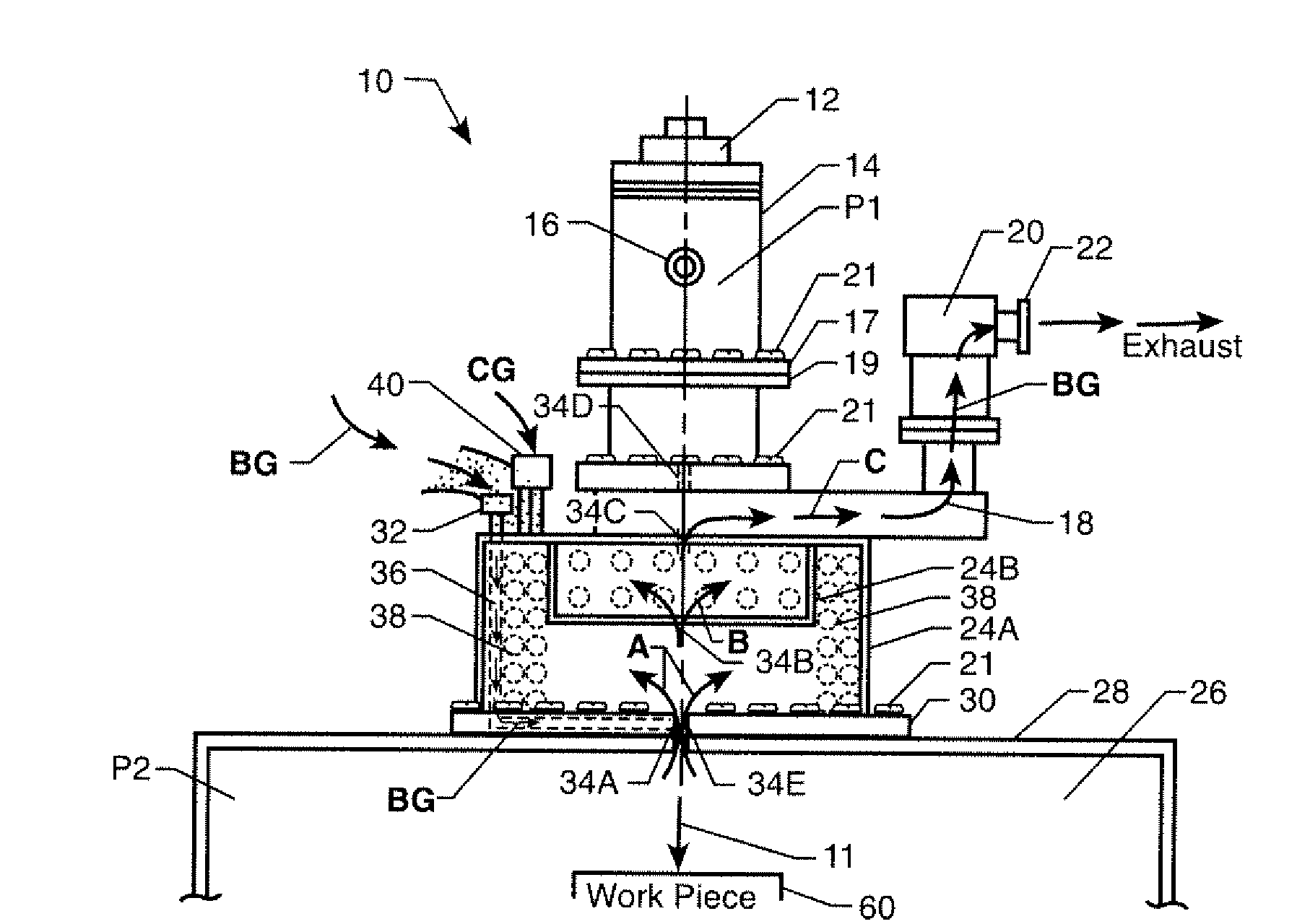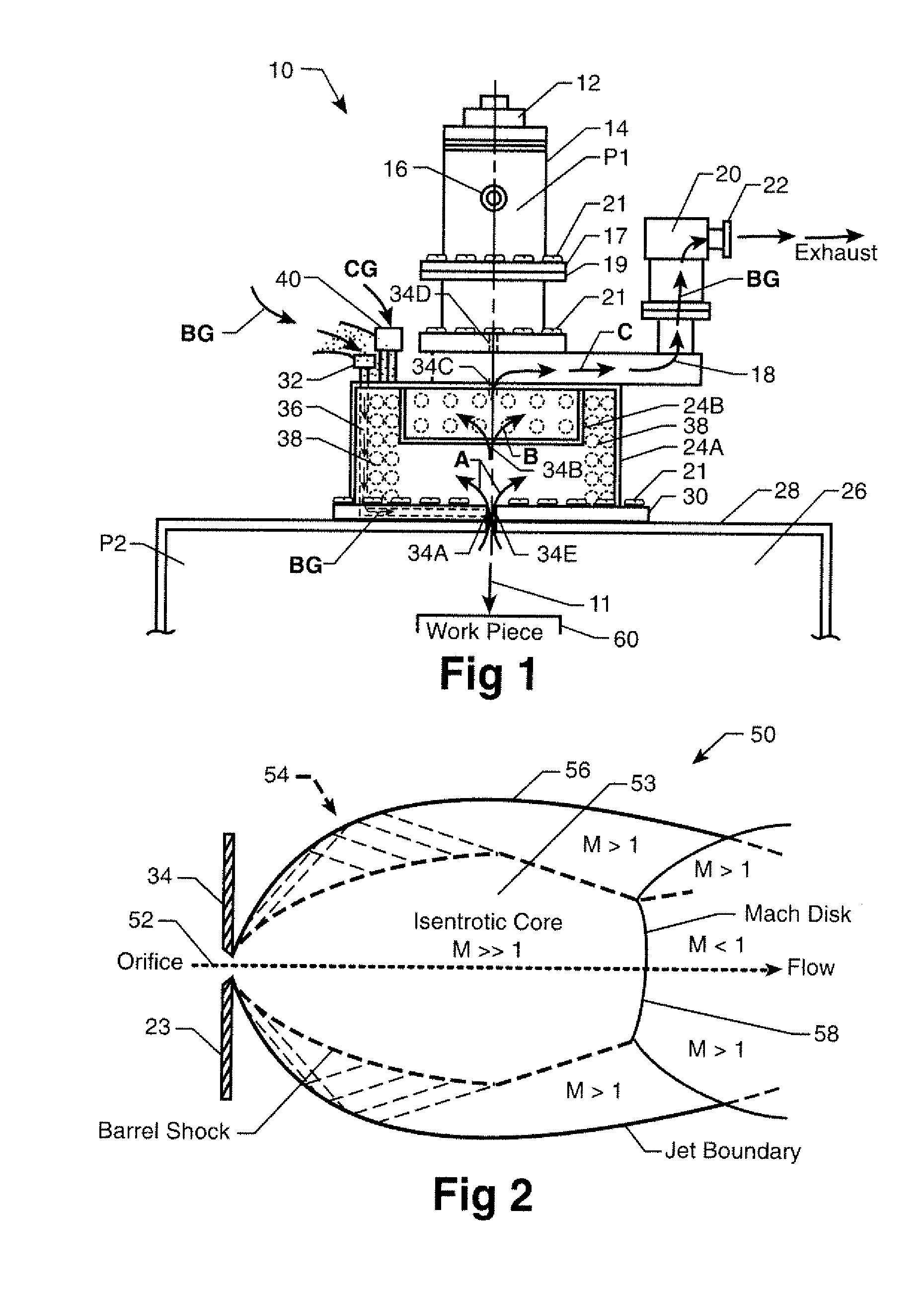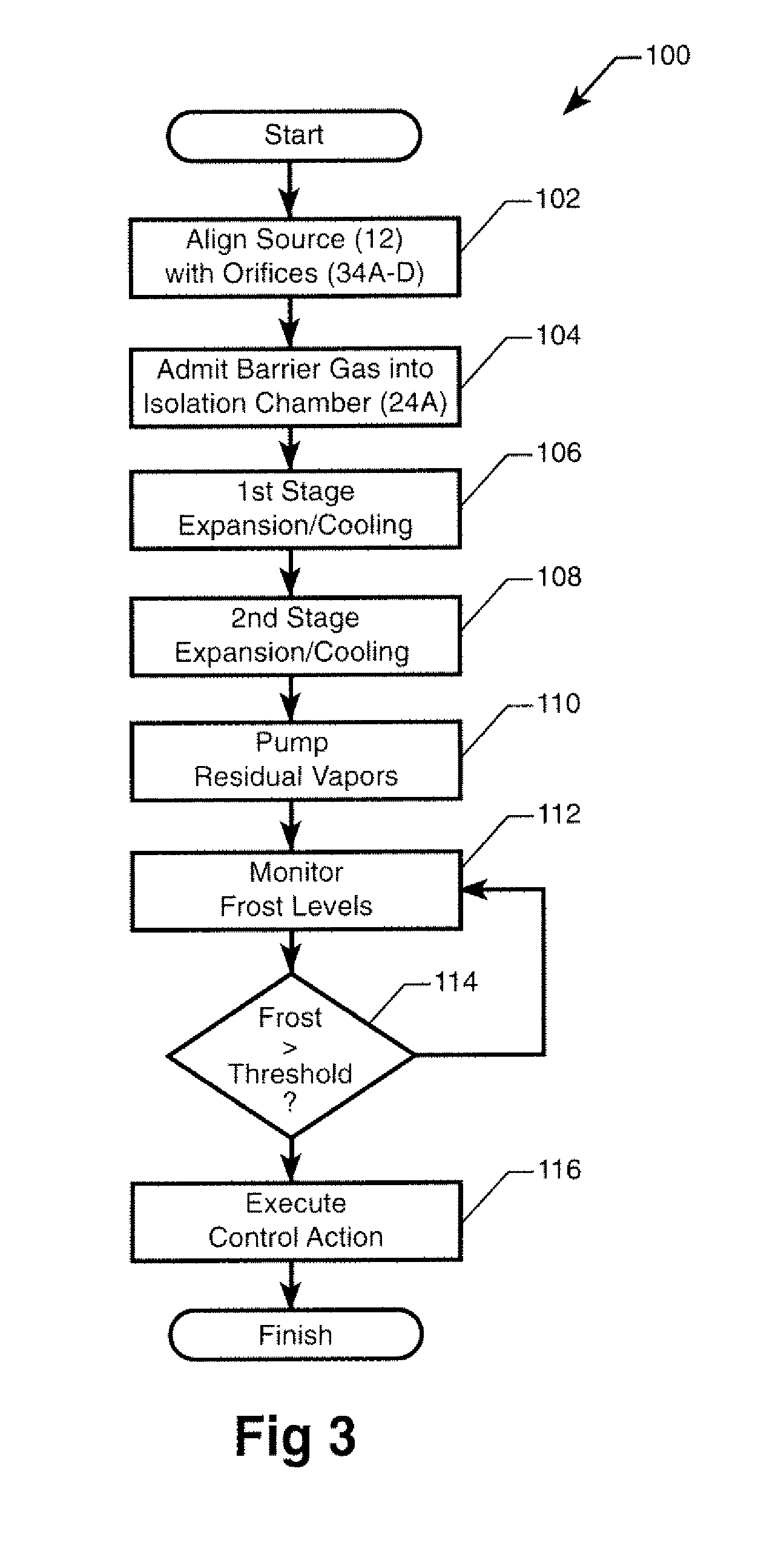Vapor-Barrier Vacuum Isolation System
a vacuum isolation and vapor barrier technology, applied in the direction of vacuum evaporation coating, electrolysis components, coatings, etc., can solve the problems of limited throughput, high cost, and large evacuation of the chamber, and achieve the effect of cost-effective and higher pressur
- Summary
- Abstract
- Description
- Claims
- Application Information
AI Technical Summary
Benefits of technology
Problems solved by technology
Method used
Image
Examples
Embodiment Construction
[0020]Referring to the drawings, wherein like reference numbers represent like components throughout the several figures, and beginning with FIG. 1, a multi-stage vapor barrier vacuum isolation system or VBS 10 is operable for generating and applying a highly collimated beam 11, such as an electron beam or an ion beam, for use in a low pressure environment. Exemplary applications include processes relating to electron beam freeform fabrication (EBF3) for near-net-shape manufacturing of aerospace or other alloy parts and / or components, as well as vaporizing, welding, cutting, and / or localized melting of metals.
[0021]For example, in the years ahead manned and unmanned missions to Mars are expected to become more frequent. The Martian atmosphere, which is predominantly carbon dioxide or CO2, has an average ambient pressure of approximately 7.5 millibars or 5.6 torr. Depending on the ability to adequately focus and steer an electron beam at such a pressure level in a CO2-rich environmen...
PUM
| Property | Measurement | Unit |
|---|---|---|
| diameter | aaaaa | aaaaa |
| diameter | aaaaa | aaaaa |
| length | aaaaa | aaaaa |
Abstract
Description
Claims
Application Information
 Login to View More
Login to View More - R&D
- Intellectual Property
- Life Sciences
- Materials
- Tech Scout
- Unparalleled Data Quality
- Higher Quality Content
- 60% Fewer Hallucinations
Browse by: Latest US Patents, China's latest patents, Technical Efficacy Thesaurus, Application Domain, Technology Topic, Popular Technical Reports.
© 2025 PatSnap. All rights reserved.Legal|Privacy policy|Modern Slavery Act Transparency Statement|Sitemap|About US| Contact US: help@patsnap.com



